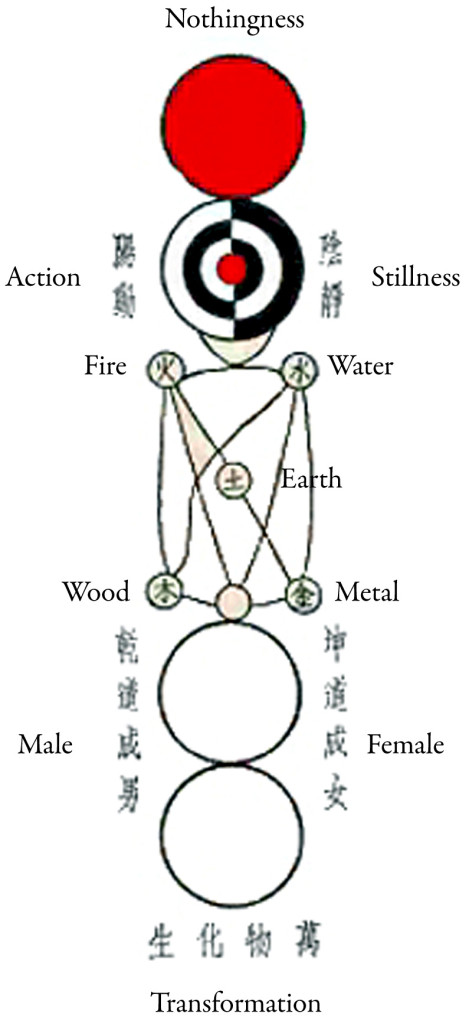
A Shiviti from Gate to the Heart: A Manual of Contemplative Jewish Practice
by Rabbi Zalman M. Schachter-Shalomi.
by Rabbi Zalman M. Schachter-Shalomi.
וְאָמַר רַבִּי יִרְמְיָה בֶּן אֶלְעָזָר: מִיּוֹם שֶׁחָרַב בֵּית הַמִּקְדָּשׁ דַּיּוֹ לָעוֹלָם שֶׁיִּשְׁתַּמֵּשׁ בִּשְׁתֵּי אוֹתִיּוֹת, שֶׁנֶּאֱמַר: ״כֹּל הַנְּשָׁמָה תְּהַלֵּל יָהּ הַלְלוּיָהּ״.
And Rabbi Yirmeya ben Elazar further said: From the day that the Temple was destroyed, it is enough for the world to use in its praise of God, or in greeting one another with the name of God, only two letters of the Tetragrammaton, namely yod and heh, as it is stated: “Let everything that has breath praise YaH. Hallelu YaH” (Psalms 150:6)


☯
[סו] וכן יש נגד עשר ספירות עשר מיני נקודות... והם: נגדכתר קָמץ, נגד חכמה פַתח, נגד בינה צֵירי, נגד חסד סֶגול, נגד גבורה שְוא, נגד ת"ת חוֹלם, נגד נצח חִיריק, נגד הוד שֻרוק, נגד יסוד מלואפום, נגד מלכות בלא ניקוד.
66. There are ten vowels, corresponding to the inner lights of the ten Sefirot...
Kamatz (ַ◌ָ) for Keter...
and Malchut without vowels.
Kamatz (ַ◌ָ) for Keter...
and Malchut without vowels.

Variant of the Taijitu ("supreme ultimate diagram"). A number of similar such diagrams are known from the Ming-era Daoist canon. The origin of this particular design is unknown (but it likely predates the 18th century)
The taijitu consists of five parts. Strictly speaking, the "yin and yang symbol", itself popularly called taijitu, represents the second of these five parts of the diagram.
- At the top, an empty circle depicts the absolute (Wuji)
- A second circle represents the Taiji as harboring Dualism, yin and yang, represented by filling the circle in a black-and-white pattern. In some diagrams, there is a smaller empty circle at the center of this, representing Emptiness as the foundation of duality.
- Below this second circle is a five-part diagram representing the Five Agents (Wuxing), representing a further stage in the differentiation of Unity into Multiplicity. The Five Agents are connected by lines indicating their proper sequence, Wood (木) → Fire (火) → Earth (土) → Metal (金) → Water (水).
- The circle below the Five Agents represents the conjunction of Heaven and Earth, which in turn gives rise to the "ten thousand things". This stage is also represented by the Eight Trigrams (Bagua).
- The final circle represents the state of multiplicity, glossed "The ten thousand things are born by transformation" (萬物化生; modern 化生万物)




